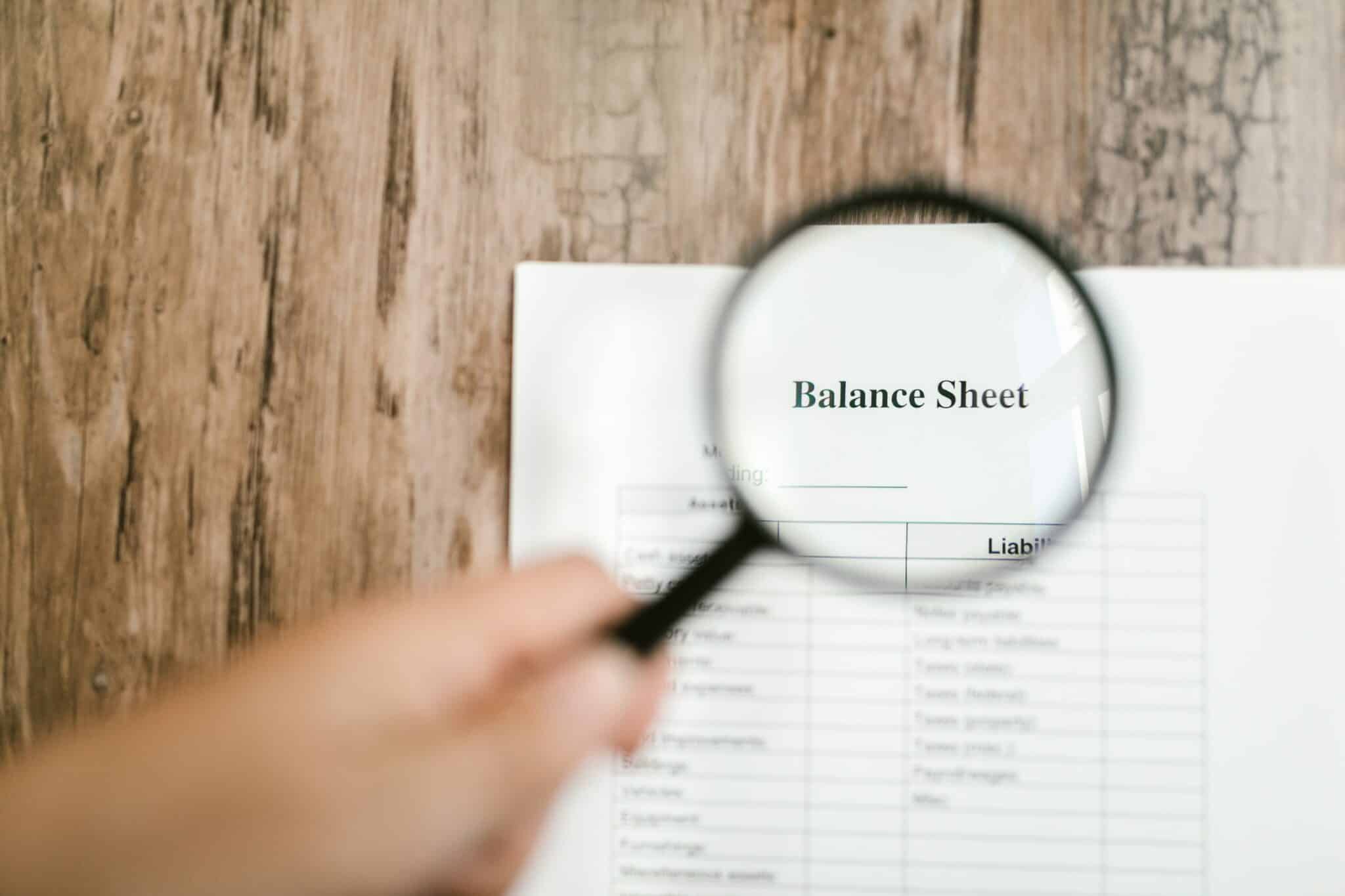How Are The Balance Sheet and Income Statement Connected?

In the finance world, two important documents provide insight into a company’s financial status: the balance sheet and the income statement. At first glance, they seem unrelated, but they are actually linked together. Let’s explore this connection and understand how these two financial documents work together. How are the balance sheet and income statement connected.
Get The Balance Sheet and Income Statement Connected
The balance sheet shows a company’s finances at a particular moment. It lists assets, liabilities, and shareholders’ equity. On the other hand, the income statement shows the company’s performance over a period, such as revenues, expenses, gains, and losses. The balance sheet looks at what the company has and owes. The income statement looks at its operations.
You might be wondering how these two documents are connected. Here’s a scenario. You analyze Company XYZ’s balance sheet and notice an increase in accounts receivables. You want to know if this affects their revenue growth.
To find out, you look at Company XYZ’s income statement and see their sales revenue has increased too. This means the increase in accounts receivables is due to more sales instead of collection issues.
This example explains how changes on the balance sheet can be interpreted by checking the income statement. The balance sheet tells you about the financial stability and liquidity of the company. The income statement tells you about its profitability and operational efficiency.
Understanding the Balance Sheet and Income Statement
The Balance Sheet and Income Statement both give us insight into a company’s financial health and performance. Together, they create a full picture of the company’s finances.
Let’s look at their components:
| Balance Sheet | Income Statement |
|---|---|
| Assets | Revenue |
| Liabilities | Expenses |
| Equity | Net Income |
The Balance Sheet shows a company’s assets (like cash, inventory, property) and liabilities (debts, obligations) at a specific point in time. The Income Statement shows how much revenue is made from operations and expenses incurred over a certain period. Net income is calculated by subtracting total expenses from total revenue.
To illustrate this link, take Company X. At the end of the year, their balance sheet showed assets worth $500,000 and liabilities of $200,000, giving them an equity value of $300,000. Their income statement reported revenue of $1 million and expenses of $800,000, resulting in a net income of $200,000.
This gives us a complete view of Company X’s finances. We can see that although their assets are higher than their liabilities, they still had to make enough revenue and manage expenses to achieve a net income.
The Connection between the Balance Sheet and Income Statement
It’s vital to grasp the link between the balance sheet and income statement, to have a full understanding of a company’s financial health. The balance sheet reflects the company’s assets, liabilities, and shareholders’ equity, at a single point. Whereas, the income statement provides info on the company’s revenue, expenses, and profitability over a given time period.
Now, let’s analyze the link between the balance sheet and income statement in more detail:
| Balance Sheet | Income Statement |
|---|---|
| Assets | Revenue |
| Liabilities | Expenses |
| Shareholders’ Equity | Profit or Loss |
As seen in the table, certain items from both statements are linked. Revenue from the income statement leads to an increase in assets on the balance sheet. Whereas, expenses decrease assets. Liabilities on the balance sheet can be affected by revenue and expenses on the income statement.
Shareholders’ equity is also related to profit or loss reported on the income statement. If a company has made profits, it will raise its shareholders’ equity. In contrast, losses will reduce shareholders’ equity.
Knowing this connection enables stakeholders to assess a company’s financial performance more extensively. By looking at the balance sheet and income statement together, investors can gain insights into the company’s ability to create revenue, manage expenses, and generate value for shareholders.
Pro Tip: When analyzing financial statements, it’s essential to consider trends over time, not just individual periods. Looking at data from various periods can uncover patterns and give a more accurate view of a company’s financial position.
Analyzing the Balance Sheet and Income Statement Relationship
Analyzing the relationship between the balance sheet & income statement involves a deep look at how these two financial statements work together. Let’s look into the details! The following table gives us an overview of the key components & their categories:
| Balance Sheet | Income Statement |
|---|---|
| Assets | Revenue |
| Liabilities | Cost of Goods Sold |
| Shareholders’ Equity | Gross Profit |
| Cash & Cash Equivalents | Operating Expenses |
| Accounts Receivable | Net Profit |
| Inventory |
These main categories have various subcategories within them, such as accounts payable, long-term debt, retained earnings, depreciation expenses, & taxes. Analyzing the balance sheet & income statement relationship can give us valuable insights into a company’s financial health. For example, if accounts receivable is increasing while revenue stays the same, it may suggest difficulties in collecting payments.
To maximize the benefits of analyzing these two financial statements together, several tips can be followed. Firstly, regular reviews of both statements help identify any discrepancies or errors. Secondly, ratio analysis using data from both statements can assess liquidity, solvency, & profitability. Lastly, utilizing software & tools specifically designed for financial analysis can streamline the process & provide comprehensive insights.
Importance of Regularly Reviewing and Comparing the Balance Sheet and Income Statement
Reviewing and comparing the Balance Sheet and Income Statement regularly is essential for making informed financial decisions. Here’s why it matters:
| Importance of Regularly Reviewing and Comparing |
|---|
| Financial Decision-making |
| Identifying Trends |
| Evaluating Performance |
| Risk Assessment |
Firstly, regularly reviewing and comparing helps businesses make better financial decisions. They can assess their financial position and plan by analyzing the information in these financial statements.
Furthermore, these comparisons help identify trends in the business. Examining changes in figures like revenue growth or asset utilization, businesses can spot patterns which may influence future performance. This enables them to be proactive and capitalize on opportunities or avoid risks.
Also, evaluating performance is important. Comparing these statements lets businesses understand their profitability, liquidity, and solvency. It helps them identify areas to improve or risks that need attention.
Plus, assessing them regularly helps with risk assessment. By inspecting assets, liabilities, revenues, and expenses, businesses can assess their strength against potential threats. This understanding allows them to take preventive action or devise strategies to manage risks.
For example, XYZ Corp., a manufacturing company, noticed a drop in profit margins from its Income Statement over consecutive quarters. After looking at its Balance Sheet, they found out raw material costs had increased due to supply chain disruptions from a natural disaster. Knowing this, XYZ Corp. adjusted their production plans and found alternative suppliers before the situation worsened. This shows the importance of regularly reviewing and comparing these financial statements.
The Balance Sheet and Income Statement Connected
Analyzing both the balance sheet and income statement is essential for understanding a company’s financial health. When looked at together, investors and analysts can discern valuable information on a firm’s profitability, liquidity, and stability.
The balance sheet reveals assets and liabilities at a certain time, while the income statement exhibits revenue, costs, and net income over a period. By comparing these two records, one can evaluate how successfully a company is generating profits and using their resources.
For example, net income from the income statement and retained earnings from the balance sheet can be contrasted to determine if the business is reinvesting its profits or distributing them to shareholders.
Cash flow is also important to consider. Although not explicitly shown in either statement, it can be deduced indirectly. The balance sheet helps track changes in working capital which affects cash flow, while the income statement gives insights into operating activities that impact cash generation.
To gain a full understanding of a company’s financial standing, both the balance sheet and income statement must be analyzed together. This allows for an extensive examination of liquidity, profitability, and overall financial health.
Frequently Asked Questions

1. What is the purpose of a balance sheet?
A balance sheet provides a snapshot of a company’s financial position at a specific point in time. It shows the company’s assets, liabilities, and shareholders’ equity, which helps in assessing its financial health.
2. What is the purpose of an income statement?
An income statement, also known as a profit and loss statement, reflects a company’s financial performance over a specific period. It shows the revenue generated, expenses incurred, and ultimately the net profit or loss.
3. How are the balance sheet and income statement connected?
The net profit or loss shown on the income statement directly affects the shareholders’ equity on the balance sheet. If there is a profit, the equity increases, while a loss decreases the equity. The balance sheet and income statement together provide a comprehensive view of a company’s financial status.
4. How does the balance sheet impact the income statement?
Changes in the balance sheet accounts, such as assets and liabilities, affect the income statement. For example, if a company acquires new assets, it may incur depreciation expenses that impact the income statement. Similarly, changes in liabilities, such as interest on debt, also impact the income statement.
5. How does the income statement impact the balance sheet?
The net profit or loss from the income statement impacts the retained earnings section of the balance sheet. Retained earnings accumulate the profits from previous periods, and a positive net profit increases this balance. Conversely, a negative net profit decreases the retained earnings.
6. Why is it important for investors to understand the connection between the balance sheet and income statement?
Investors analyze both the balance sheet and income statement to evaluate a company’s financial performance and potential risks. By understanding the connection between these statements, investors can gain insights into how a company’s profitability, assets, and liabilities interrelate.
















Leave a Reply